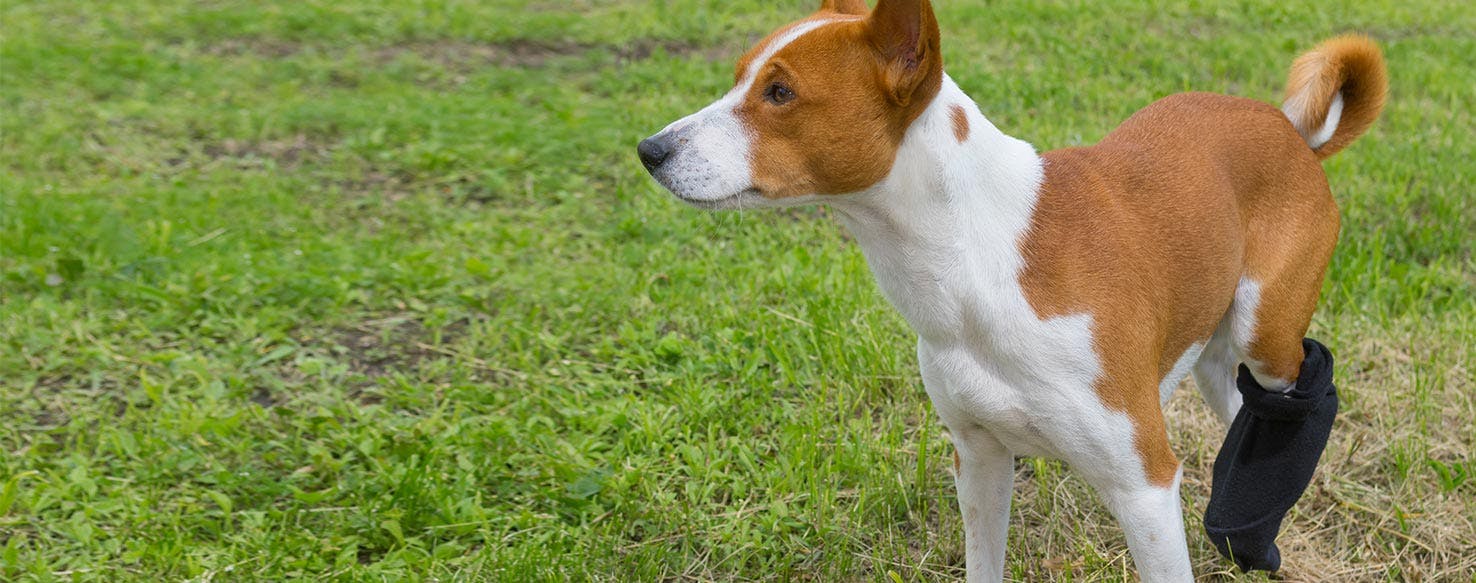
By Amy Caldwell
Published: 09/26/2017, edited: 10/17/2021
Save on pet insurance for your pet
You don't have to choose between your pet and your wallet when it comes to expensive vet visits. Prepare ahead of time for unexpected vet bills by finding the pawfect pet insurance.
Does your dog seem to be having difficulty getting up from laying down? Has the bouncing stride he once had slowly been degenerating into a stagger on a good day? Seeing this can make you feel completely helpless-- it can seem as though all you can do is wait until he can no longer get around on his own or without pain. But, long before his problem becomes this bad, talk to your vet; there are things you can do to help.
What Can Cause Hind End Weakness in My Dog?
If you were to ask your vet what might be causing your dog's hind end to become weak, he would most likely tell you that there are several different conditions that can lead to a loss of power and ability. One of the most notable things about this condition is that it can come on virtually overnight with no warning signs.
Many of the conditions leading to hind end weakness start out in your dog's spinal column and include conditions such as vertebral instability, also known as "Wobbler Syndrome", and intervertebral disc disease. But the most common causes are osteoarthritis and hip dysplasia. Hip dysplasia is a condition that develops slowly over time as the bones in the dog's hips begin to separate (something they are not meant to do). When this happens, the hip joints are no longer able to function properly. Not only can this condition be quite painful, but it can make it hard for your dog to rise, walk, or climb stairs.
In most cases, these problems happen to large breed dogs as they get older. However, hip dysplasia can get its start at a much younger age and is something your vet should check for during your dog's annual medical checkup. There are some treatments available for hip dysplasia, but the earlier this condition is caught, the more likely it is that the treatments will be successful.
The One Incurable Condition that Causes Hind-End Weakness
There is one very scary disease that leads to hind end weakness in dogs, and especially larger breeds like German shepherds, called DM, or degenerative myelopathy. This is an extremely cruel disease that, as of yet, has no known cause nor does veterinary science have a cure. While it is most common in larger breeds, it is possible for smaller breeds to contract it.
DM results in the destruction of the protective sheath surrounding the nerves running through the dog's spinal cord. As these nerves are destroyed, the signals they are designed to carry become disrupted and the muscles they are intended to control can no longer function correctly. Since they are no longer moving, the muscles start to atrophy. While these symptoms may fluctuate in severity, the disease is progressive and, in time, the dog will no longer be able to walk.
Diagnosing DM is essentially a matter of ruling out all the other possible causes of hind-end weakness. Once the dog has been diagnosed with this condition, it is only a matter of time before it takes its toll. Several studies have found that regular physical therapy can help dogs with DM live a longer and more comfortable life.
Have Your Vet Diagnose the Problem
Rather than trying to figure out what is wrong with your dog on your own--or ignoring it-- take your dog in to see his vet. Once the vet has diagnosed the problem, he will be able to recommend an appropriate course of treatment if one is available. While there is no cure for some issues, it is possible there may be treatments your vet can use to help with the problem or at the very least ensure your dog remains as comfortable and pain-free as possible for the rest of his days.
You may also like
